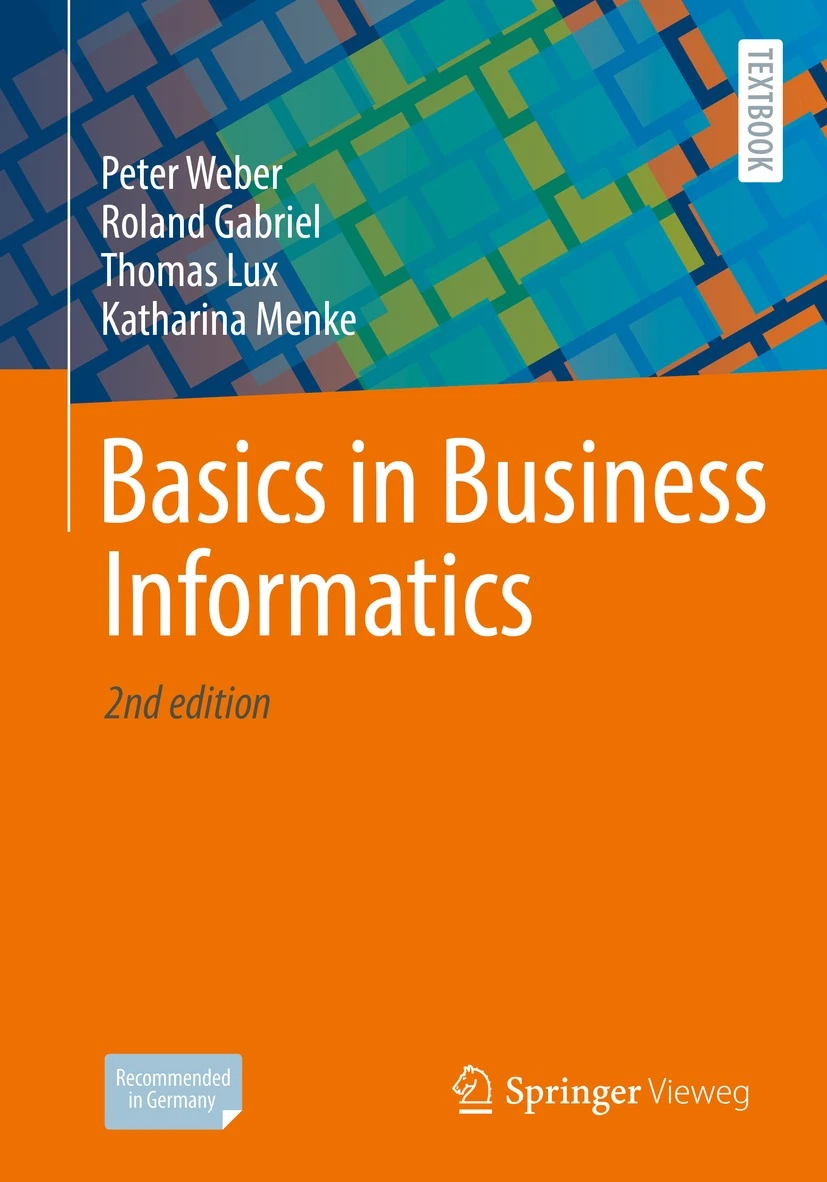
Basics in Business Informatics
This book takes you on a journey into the world of business informatics. Starting with the key question »What is business informatics and what are its tasks and objectives?«, it gives you an insight into key aspects of business informatics, such as computer systems and computer networks, business applications, databases, software engineering, and management support systems. More specific topics are covered as well, including the relevance of business process management in a very dynamic, competitive and IT dominated business environment, the leadership function of information management for companies as well as key aspects of data security and data protection.
The book is structured into modules, which include detailed explanations, exercises (including the corresponding solutions) as well as excursuses to current topics, like e.g. Bitcoin, Blockchain, and TOR. As a result, it serves as supportive literature for lectures in universities, but also as a complementary source of information for vocational training courses with an IT-focus.
ISBN (Print): 978-3-658-35858-7
ISBN (eBook): 978-3-658-35859-4
Contents
Downloadable Instructor Ressources
Here you have the opportunity to download additional material for each chapter, which you can use in your courses. These are available in different formats, e.g. to upload to the Quick-Response-System Socrative or to the learning management system Moodle.
Access
Send us a request to receive access to the additional material.Contact Form
Authors

Prof. Dr. Peter Weber
Professor for Computer Science / E-Business at South Westphalia University of Applied Sciences
Prof. Dr. Roland Gabriel
Has been the chair for Business Informatics at Ruhr University Bochum since 1989 and is retired since 2014
Prof. Dr. Thomas Lux
Professor for Process Management in the Health Care Sector at the Niederrhein University of Applied Sciences